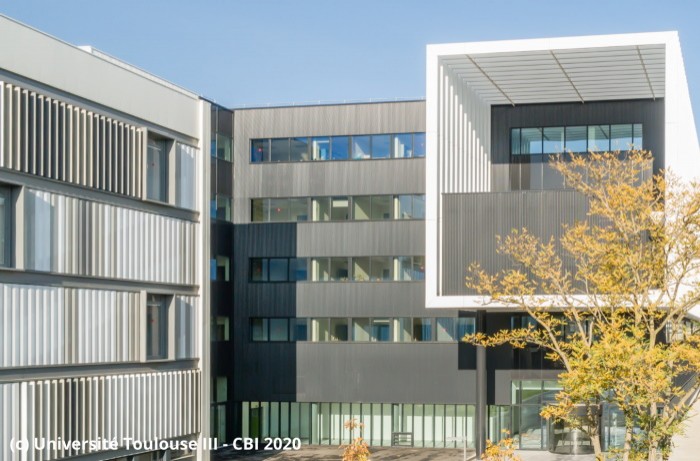Projects
The University of Toulouse called on Nexans and Spie to equip a new building for the staff of the Center for Integrative Biology (CBI) entirely in fiber, in an FTTO (Fiber to the Office) model.
AdvertisingDuring the construction of a new building on the campus of the University of Toulouse III – Paul Sabatier, intended to accommodate teams from the Center for Integrative Biology (CBI), the center’s IT department chose to equip it entirely in fiber optic, based on the FTTO (Fiber to the office) model. For this project, it called on Nexans and the integrator Spie.
The CBI is a research federation attached to the CNRS and the University of Toulouse, created in 2016. It has around forty research teams, representing around 400 people, who have worked on understanding the functioning of living organisms. When it was created, the teams were divided between two separate buildings, one of which, IBCG, belongs to the CNRS. As part of the “Campus Plan”, it was decided to construct a new building of 12,000 m², competent for 4R4 and directly connected to that of the CNRS, in order to bring together all the teams in a single unit. Both buildings are connected to Renater, the national telecommunications network for technology, education and research. However, for the internal infrastructure of the 4R4 building, a flexible solution had to be found, compatible with that of the IBCG building, and able to meet the needs of researchers, who exchange very large files, which can reach tens of terabytes. “The objective for the new building was a long-term, future-proof investment, a flexible solution that fits into the lifespan of the new building, i.e. around thirty years”, explains Jocelyne Pérochon, IT manager at CBI. “An essential element was also the interconnection with the old IBCG building and therefore total compatibility between the two systems. »
A secure and easy-to-manage network
Following the public contract, Spie was selected as an integrator in 2017. On his advice, the choice of manufacturer was opened up more widely and the CBI finally selected Nexans’ FTTO LANactive solution in 2018, in particular thanks to the positive feedback from CNRS laboratories already equipped. In this solution, a single-mode optical fiber, offering almost unlimited throughput, is installed from the network core to the workpieces. A total of 411 switches capable of being connected to PCs, IP telephones, printers and other equipment have been deployed in the user environment. They have five RJ45 ports and are powered over Ethernet to limit the number of cables. These switches natively integrate security functions, such as access control by authentication of equipment. To ensure redundancy, a local technique was created in the 4R4 building, in addition to present in the IBCG building. The physical security of the network is ensured by a redundant star infrastructure up to the user, in order to allow continuity of service even in the event of a problem on the network (broken fiber, failure of a network core, etc.) . The network is doubled in both directions with a high availability system.
AdvertisingSince November 2020, more than 250 CBI staff have been installed in the 4R4 building, benefiting from the flexibility offered by the infrastructure. For the IT department, this also has advantages in terms of administration, with a centralized platform and precise mapping of its status, which makes it possible to quickly detect and repair breakdowns or configuration errors. “The LANactive Manager software is easy to understand, it’s a real help for getting started and for day-to-day network management. When we do the acceptance of a building, there are a lot of things to check and this tool makes our job easier”, appreciates Pierre Solbes, system and network administrator at the CBI. Another advantage is that the FFTO takes up less space than a copper infrastructure: 1.3 km of fiber compared to approximately 55 km in a traditional solution, with a single extractable circulating cable deployed on the floors. The new network is now available to the CNRS and the university for services such as Wi-Fi, access control, IP telephony or alarm management. IP convergence and interconnection are provided by the new network. For this, the Radius server was deployed on FTTO switches at the functional level rather than at the core switch level, to ensure interoperability between multi-vendor equipment. “Transferring these services from traditional switches to FTTO switches has allowed us to segregate problems, reduce implementation constraints and benefit from a more interesting intervention granularity”, underlines Pierre Solbes.
Article written by

Aurelie ChandezeDeputy CIO Editor
Follow the author on Linked to,
Share this article

